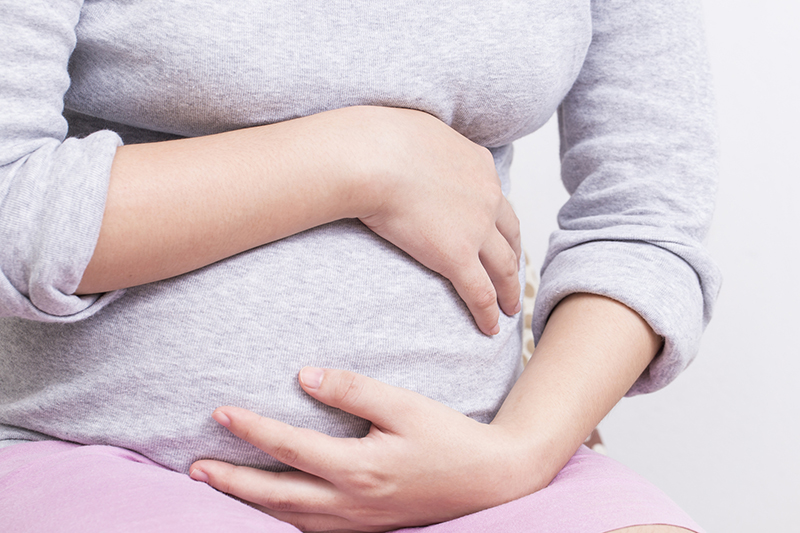Families For Life | Coping with the Unexpected: Pregnancy Complications

While most pregnancies are smooth sailing, some women do have a tougher time than others.
Anaemia
Anaemia is a condition in which mums-to-be have less than the usual number of red blood cells in her blood. It can occur during pregnancy and is most often caused by the increased iron demands of the baby and the necessity for the pregnant women to expand her blood volume.
If you are anaemic, you may feel tired and are less able to cope with any loss of blood when you give birth. If routine blood tests during pregnancy show that you are anaemic, the doctor may prescribe iron and folic acid tablets. Sometimes anaemia occurs due to excessive blood loss e.g. bleeding piles or gastric ulcers. Do let your doctor know if you have any of these symptoms.
Antenatal depression
Depression during pregnancy can occur when changes experienced by the mum-to-be are overwhelming. Symptoms include low mood, irritability, loss of interest, poor appetite, poor concentration, excessive self-blame or guilt, and feeling that life is meaningless.
If these symptoms continue for two weeks or more, and/or affect your work and the people around you, talk to your doctor. With proper care and management, you can still enjoy the journey to parenthood and reduce the chances of developing postnatal depression.
Gestational diabetes
Due to the hormonal changes in pregnancy, some women may become diabetic during pregnancy. If it clears up after delivery, it is merely gestational diabetes. This means they are diabetic only when pregnant but it also means they are at risk of becoming diabetic later in life. Risk factors for gestational diabetes are first-degree family history of diabetes (i.e. parents and siblings), obesity, previous baby weighing more than 4kg or past history of gestational diabetes in pregnancy. Some women remain diabetic even after delivery. These women are true diabetics who happen to be picked up at pregnancy.
Diabetic mums-to-be may be at risk of:
having a large baby weighing more than 4kg. This may mean a more difficult delivery and an increased possibility of requiring a caesarean section (C-section). There is also a higher risk of the baby’s shoulders being stuck at delivery, which may result in birth injury and rarely brain damage.
having a miscarriage or stillbirth
developing pre-eclampsia (see below) in the latter half of pregnancy or Type 2 diabetes after pregnancy.
Their babies may be at risk of:
congenital abnormalities
having health problems shortly after birth such as breathing difficulties, low blood sugar or low calcium levels
becoming overweight or developing diabetes later in life.
If you have gestational diabetes, it is important to keep a close tab on your blood sugar by watching your diet and monitoring your blood sugar level. If necessary, your doctor may start you on medication. Having good control of your sugar intake will help minimise the risk to you and your baby. Reduce your sugar and carbohydrate intake and do some exercises. Work closely with your doctor to ensure a safe outcome for you and your baby.
Pre-eclampsia
This is known as pregnancy-induced high blood pressure and is associated with protein in the urine. It usually occurs in first-time mothers in the second half of the pregnancy. Pre-eclampsia affects 10 percent of pregnancies and can run in families.
If you have bad headaches, blurred vision, vomiting, a pain just below the ribs and sudden swelling of hands, feet and face, please see your doctor immediately.
Most cases of pre-eclampsia may not cause any symptoms, but it can be life-threatening if left unchecked. Hence it is important that you attend the antenatal appointments. You may need to be hospitalised or even deliver your baby early through induction of labour or C-section.
Multiple pregnancies
Such babies will usually be smaller than single babies and are at risk of premature delivery. It is very important early in pregnancy to establish whether you have identical or non-identical twins by ultrasound scan. This is because identical twins have a higher risk of twin-to-twin transfusion which is an imbalance in blood distribution between the two babies who share a common placenta. This might result in one being growth restricted and the other being larger and at risk of heart failure. This type of twins need close monitoring scans to pick up potential problems so that appropriate treatment can be instituted early.
Even non-identical twins require regular scans to monitor their growth. The mode of delivery will depend on the circumstances. This is best discussed with your doctor.
Related: Pregnant with Twins – Double Joy or Double Trouble?
Note:
If you have an existing medical condition prior to being pregnant, it is important to ensure a safe outcome for you and your baby during pregnancy by continuing consultation with your doctor.
Explore more
Contributed by:
Health Promotion Board's Parent Hub